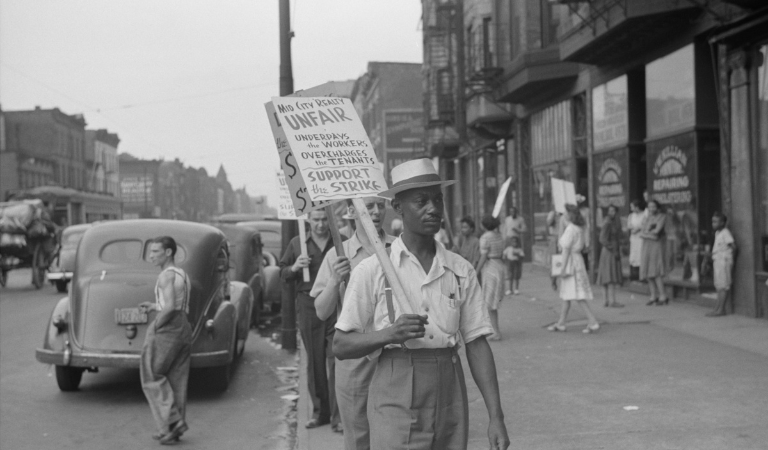The COVID-19 pandemic has hit the restaurant industry hard, with many businesses struggling to survive. In the midst of all this turmoil, there has been a significant increase in union activity among fast-food workers. This is mainly due to employees feeling unsafe in the workplace and wanting to have a stronger voice in decisions about health and safety protocols. As a result, restaurant owners need to be more informed about unions and what they could mean for their business. While unions for restaurant workers can provide some much-needed protections for workers, they can also be costly and disruptive. By being prepared and informed, restaurant owners can make better choices for their businesses and employees.
What Is The Main Role Of A Union?
Unions are organizations that represent workers in negotiations with management about workplace conditions and compensation. Joining a union is voluntary and is typically formed when employees feel they are mistreated and communications with management have failed.
Unions ensure that workers receive fair wages, benefits, and that working conditions are safe and equitable. In addition, unions help to resolve workplace disputes and investigate potential breaches of laws in the workplace. Workers who choose to join pay fees to the union to support its organizing, legal, and lobbying activities.
History Of Restaurant Unionization
The restaurant industry has a long history of unionization. Organized
labor first came into the industry in 1891, when cafeterias began using
union employees to attract union factory workers. However, the 1930s saw
a significant decrease in restaurant union membership due to new labor
laws that made it more difficult for employees to unionize. This trend
was reversed in the 1950s when the Fast Food Workers Organizing
Committee was formed to help workers in the burgeoning rise of fast food
unions. However, fast food corporations have always opposed unions,
favoring increased profits and top-down management over worker rights.
As a result, unionization rates in the restaurant industry are still
relatively low.
How Many Employees Are Needed To Form A Union?
To form a union, the majority of workers in an establishment have to agree to join. At least 30% of workers must sign cards or a petition in favor of a union. If 30% is acquired, the National Labor Relations Board (NLRB) will hold an election. If the majority votes in favor of a union, workers will be authorized to form one. Once a union for food service workers is formed, the employer must recognize it and negotiate in good faith about wages, hours, and working conditions.
What Are The Steps In Union Organizing
When workers in the restaurant industry want to unionize, they follow a specific process. Here are the steps:
1. A group of interested workers privately discuss workplace issues and begin to build support for a union.
2. If enough workers show support for a union, they organize a committee and determine who the leaders are. Then, they become familiar with the steps for forming a union and the issues that will be raised during a campaign.
3. The committee solicits employees to sign authorization cards. The campaign goes public, handing out letters and leaflets.
4. If workers sign in favor of a union, the NLRB must conduct an election. However, a vote is not necessary if an employer voluntarily recognizes the union based on evidence that the majority of workers share the same thoughts.
5. If workers vote for a union, anyone who thinks the NLRB’s standards were not met may file an objection to the election with the NLRB’s regional director. If the objections are substantial, a new election may be held.
6. If there are no objections filed or if they are filed but not dismissed, the NLRB provides a certification of the election’s results.
7. If the union wins the election, both the union and the company begin to negotiate a contract.
Are Unions Good For Restaurants?
Foodservice unions can provide many benefits to restaurant workers,
including better wages and job security. However, unions can also be a
source of conflict between employees and management. In some cases,
unions can make it difficult for restaurants to respond to changes in
the marketplace. For example, unions that increase wages make businesses
less competitive because higher wages mean lower profits — making it
difficult for companies to invest money in updates to their services. As
a result, the decision of whether to unionize is one that both employees
and management should carefully consider. The pros and cons of unions
should be weighed against each other to determine what is best for the
restaurant and its employees.
What To Know About Working With Unions
Because of the resurgence of interest in unions among workers across the country, employers may face more questions and requests from employees about unionization. It is important for employers to understand their rights and responsibilities when it comes to unions. Under the National Labor Relations Act, employers have the right to express their opinion on unions, as long as they do not engage in activities that could be construed as coercion or interference.
However, employers must also provide employees with accurate information about unions, and they cannot intimidate or retaliate against employees interested in organizing. By understanding the basics of labor law, employers can ensure they respect their employees' rights while also protecting their own interests.
Educate Yourself
Employers who are faced with the prospect of unionization should take the time to learn about unions and how they can impact their business. With this knowledge, employers can make an informed decision about whether to support a union campaign at their restaurant.








